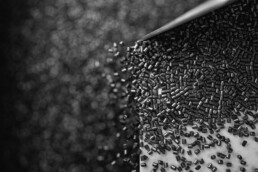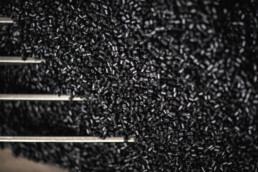XENIA® PRÉSENTE LA NOUVELLE GAMME DE MATÉRIAUX THERMOPLASTIQUES RÉSISTANTS AUX CHOCS
Xenia Materials présente l’Upgrade ST, une technologie conçue pour augmenter la résistance aux chocs des matériaux renforcés de fibres.
Les composites thermoplastiques renforcés de fibres se distinguent par leur excellente combinaison de résistance, de rigidité et de légèreté. Cependant, certaines applications sont utilisées dans des conditions qui exigent des performances supérieures à celles offertes par les niveaux standard.
ST UPGRADE
SUPER TOUGH UPGRADE
L’Upgrade ST garantit une augmentation considérable de la résistance aux chocs, avec une amélioration moyenne de 60 % par rapport aux formulations d’origine, assurant des performances fiables à température ambiante et à basse température.
Dans le même temps, il améliore la flexibilité et le comportement élastique, avec une augmentation moyenne de l’allongement à la rupture de 40 % par rapport aux formulations sans upgrade.
APPLICATIONS
L’Upgrade ST peut être appliquée à toutes les applications nécessitant des performances avancées: de l’aéronautique au sport automobile, où les composants légers et à haute rigidité sont essentiels, jusqu’aux biens de consommation exigeant une fiabilité structurelle, tels que les chaussures de ski, les fixations, les chaussures de montagne, les semelles et les patins de hockey.

L’Upgrade ST peut être sélectionné et appliqué à une large gamme de formulations Xenia, notamment:
Grâce à sa polyvalence, la technologie ST Upgrade peut être étendue à toute matrice polymérique et tout renfort utilisé par Xenia, garantissant une liberté de conception maximale et la possibilité de créer des solutions sur mesure pour les applications les plus exigeantes.
XELIGHT®: LIGHTWEIGHT MATERIALS FOR SUPERIOR PERFORMANCE
What drives the material choice in sports footwear?
When it comes to sports footwear, materials are required to ensure lightness, flexibility, structural support and responsiveness.
These properties are essential to meet the high standards of designers and athletes, enabling footwear to deliver speed, control and reactivity with every movement.
Xenia has developed a range of materials that redefines lightness, without sacrificing mechanical and functional performance.
XELIGHT®
XTREME LIGHTWEIGHT MATERIALS
Based on PEBA, XELIGHT® is Xenia’s range of ultralight thermoplastic composites designed for the sports and athletic footwear industry.
Thanks to their elastic structure and lightness, these materials represent the ideal solution for applications that require agility, responsiveness and freedom of movement.
MATERIALS PROPERTIES

Lightness
Engineered with Xenia’s SuperLight Technology, these materials deliver densities as low as 0.87 g/cm³ without compromising on mechanical strength.
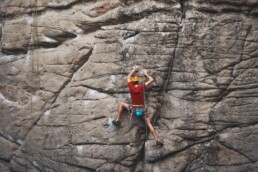
Flexibility
Thanks to their flexibility, XELIGHT® adapt seamlessly to natural movements, delivering both dynamic performance and superior comfort.

Energy Return
Xelight® optimized flexural response with low energy dispersion ensures superior rebound, boosting propulsion and maintaining performance over time.

Impact Resistance
Their impact resistance, even at low temperatures, ensures effective energy absorption and dissipation, as well as increased durability, providing protection and support during activity.
PERFORMANCE COMPARISON
XELIGHT® vs PEBA vs TPU
This range of materials was developed to meet the demands of high-performance footwear, offering mechanical strength and flexibility at an exceptionally low weight. The lower density, compared to PEBA and TPU, opens new possibilities in lightweight shoe design.
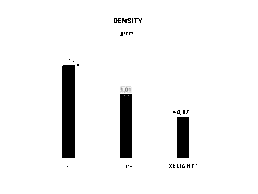
*Data for TPU and PEBA are based on publicly available values
APPLICATIONS

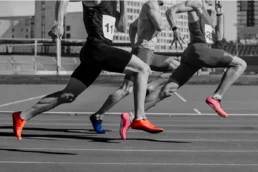







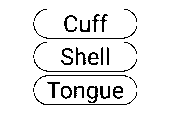






CARBON FIBER-REINFORCED FILAMENTS FOR 3D PRINTING: PA11 vs PA12
In the 3D printing industry, producing functional components that match the performance of traditional manufacturing methods requires materials that offer an optimal balance of low weight and high mechanical strength.
Among these, carbon fiber-reinforced PA11 stands out as a bio-based solution that combines mechanical properties, chemical resistance and sustainability.
On the other hand, carbon fiber-reinforced PA12 remains one of the most established solutions for producing high-performance components, especially in sectors such as automotive, aerospace, and precision engineering.
Which one to choose?




XECARB® SL 3DF
Lightened 15% Carbon Fibre Reinforced PA11
Based on the properties of PA11, Xenia has developed XECARB® SL 3DF, a technical filament reinforced with 15% carbon fiber that delivers an exceptional combination of strength and lightness, featuring a density of only 0.99 g/cm³.

Lightness
Structural performance

Impact Resistance
SUPERLIGHT TECHNOLOGY
By integrating proprietary Superlight technology, XECARB® SL 3DF achieves a significantly lower density than conventional filaments, enabling the manufacture of lightweight, strong, and durable parts without sacrificing mechanical performance.
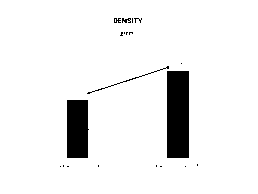
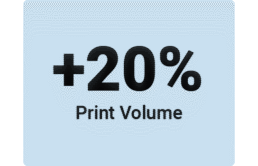
SuperLight technology allows for up to a 20% reduction in mass per unit volume, optimizing material usage and enhancing production efficiency compared to standard, non-lightweight filaments.
CARBON FIBRE-REINFORCED PVDF FOR THE CHEMICAL PROCESS INDUSTRY
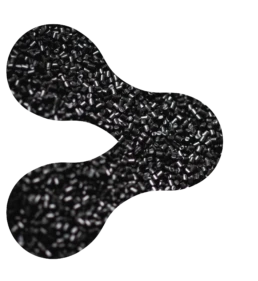
PVDF is widely used in the chemical industry due to its excellent resistance to corrosive substances and its strong thermal performance.
However, under operating conditions involving mechanical stress, abrasive environments or the risk of electrostatic charge buildup, unfilled PVDF may show limitations.
When carbon fibre is integrated into polymer matrices such as PVDF, it acts as a reinforcement that significantly enhances the material’s properties, allowing it to:




PERFORMANCE COMPARISON
MECHANICAL RESISTANCE
The addition of carbon fiber progressively increases the stiffness of the material, enhancing its resistance to deformation under increasing pressure.
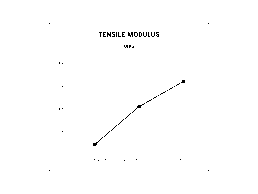
Comparison between unfilled PVDF, 10% carbon fibre reinforced PVDF and 20% carbon fibre reinforced PVDF.
ELECTRICAL CONDUCTIVITY
Carbon fibre reinforcement contributes to increased electrical conductivity, allowing the material to perform antistatic functions in applications where charge control is essential.
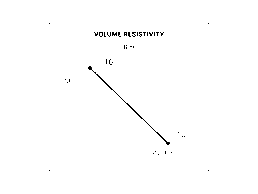
Comparison between unfilled PVDF and carbon fibre-reinforced PVDF.
INDUSTRIES AND APPLICATIONS
Thanks to its enhanced properties, carbon fibre-reinforced PVDF proves to be a reliable choice for applications that demand high performance in terms of strength, durability and safety, especially in complex and high-risk environments.
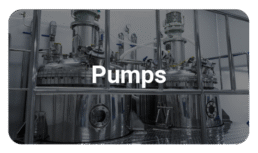
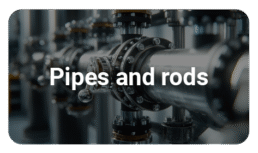

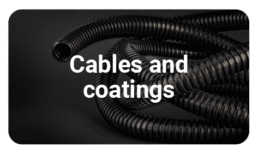


XENIA’S PVDF-BASED MATERIALS
Carbon fibre reinforced PVDF
XECARB® 45-C10
10% carbon fiber reinforced PVDF
XECARB® 45-C20
20% carbon fiber reinforced PVDF
Structurally modified carbon fibre reinforced PVDF
XECARB® 45-C10-S
10% carbon fiber reinforced PVDF
XECARB® 45-C20-S
20% carbon fiber reinforced PVDF
XENIA® PRESENTE LES NOUVEAUX COMPOSITES THERMOPLASTIQUES CERAMIQUES AU SALON EPHJ 2025
Xenia Materials annonce le lancement de XERAMIC™, une gamme innovante de composites thermoplastiques céramiques développés pour offrir des performances élevées associées à une esthétique raffinée.
Grâce à la présence du filler céramique, la gamme XERAMIC™ offre une conductivité thermique élevée, qui permet une dissipation efficace de la chaleur et une surface à effet « cold-touch », ainsi qu’une densité élevée. Elle constitue ainsi une offre unique au sein du portefeuille Xenia, traditionnellement axé sur la légèreté.
Conductivité thermique
Densité
Dureté
Les matériaux XERAMIC™ se distinguent par leur formulation qui associe des matrices polymères sélectionnées à des charges céramiques de haute technologie.
XERAMIC™ est actuellement disponible en matrice polymère PPA biosourcée, proposée en deux versions : PURE, caractérisée par une forte teneur en charge céramique, et CORE, qui allie le contenu céramique au renfort en fibre de carbone.
LES MATÉRIAUX
XERAMIC™ | PURE
Haute teneur en céramique
XERAMIC™ | Pure est formulé sur une matrice polymère PPA biosourcée et renforcé par une teneur élevée en filler céramique.
Cette combinaison confère un équilibre unique entre performances, conductivité thermique et qualité esthétique, faisant de ce matériau un choix idéal pour les applications où la finition de surface et les performances sont toutes deux essentielles.
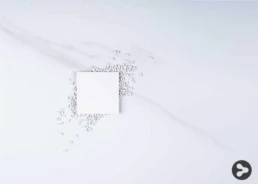
XERAMIC™ | CORE
Teneur en céramique et renforcement en fibres de carbone
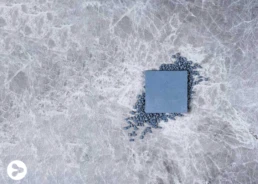
XERAMIC™ | Core valorise l’expérience de Xenia dans les composites renforcés de fibres, alliant la charge céramique au renfort en fibre de carbone.
Basé sur une matrice polymère PPA biosourcée, ce composé innovant associe les caractéristiques de la charge céramique aux propriétés mécaniques haute performance de la fibre de carbone.
Avec le lancement de XERAMIC™, Xenia renforce davantage son engagement dans le développement de composites thermoplastiques avancés, capables de combiner de hautes performances mécaniques et une esthétique soignée, répondant ainsi à la demande croissante de solutions où la valeur technique et le design jouent un rôle stratégique.
CONDUCTIVE MATERIALS FOR THE CHEMICAL PROCESS INDUSTRY
In the Chemical Process Industry (CPI), selecting the right materials is essential to ensuring the longevity and reliability of critical components such as pumps, valves, pipes, cables, batteries and sensores.
Xenia has designed a new range of materials based on PVDF, engineered to combine high performance and reliability for advanced applications.
Compared to neutral PVDF, these compounds offer permanent electrical conductivity, ensuring stable antistatic performance over time (ATEX Compliance) while preserving PVDF’s exceptional chemical resistance. Their V0 fire resistance rating enhances safety, while improved UV resistance extends durability, even in demanding outdoor environments.
At the same time, their processability remains similar to pure PVDF, ensuring complete integration into existing manufacturing workflows.

Chemical Resistance

Electrically Conductive

Fire Resistance

UV Resistance
PVDF is a thermoplastic fluoropolymer that provides excellent chemical resistance, including high tolerance to strong acids and oxidizing agents.
It exhibits outstanding thermal stability, with an operating range of -40°C to 150°C, and is highly resistant to UV radiation, making it ideal for outdoor applications.
With remarkable mechanical strength, abrasion resistance and structural integrity even at high temperatures, PVDF also exhibits piezoelectric properties and chemical inertness, making it highly durable in demanding conditions.
THE COLLECTION



XECOND™ E 45
Easy Flow Conductive PVDF
XECOND™ E 45 is a high-performance conductive PVDF material designed for electrical conductivity applications.
It is easily processable and is suitable for both injection moulding and extrusion processes.
With a tensile modulus 20% higher than standard PVDF, XECOND™ E 45 offers enhanced strength and durability, making it ideal for use in demanding electrical applications where conductivity is essential.

XECARB® 45
Carbon Fibre Reinforced PVDF

Available with 10% or 20% of reinforcement, XECARB® 45 is Xenia’s advanced carbon fibre reinforced PVDF.
Designed for both structural and conductive applications, it expands the range of possibilities compared to standard PVDF.
With a volumetric resistivity of 10^-3 and high structural strength, XECARB® 45 is ideal for demanding applications that require enhanced mechanical properties and electrical conductivity.
XECARB® 45-S
Stracturally Modified Carbon Fibre Reinforced PVDF
XECARB® 45-S is a carbon fibre reinforced PVDF, based on structurally and chemically modified PVDF.
Available with 10% or 20% carbon fibre reinforcement, this high-end material is designed for advanced structural and conductive applications.
It combines exceptional resistance to chemically aggressive substances with superior structural integrity, delivering outstanding durability and strength for the most demanding environments.
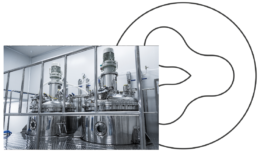
Available also in filament form for 3D printing:
INDUSTRY & APPLICATIONS
HIGH-PERFORMING MATERIALS FOR EYEWEAR APPLICATIONS
In eyewear manufacturing, the careful selection of materials is critical to achieving an optimal balance between performance, comfort, style and sustainability.
Applications such as frames, protective eyewear, temples and other components require essential properties like lightweight, impact resistance and durability.
These characteristics are directly influenced by the choice of the right materials and are crucial to ensuring eyewear that is both durable and comfortable, enhancing the overall user experience.
Xenia’s expertise allows manufacturers to achieve high flexibility in terms of mechanical performances and design, resulting in versatile applications suitable for different environments.

Performances

Lightweight

Flexibility

Impact Resistance
Beyond aesthetics and design, performance-oriented materials are crucial for applications requiring precision, reliability and peak performance.
For the eyewear industry, Xenia has developed innovative materials that provide high-level solutions for the most demanding applications, from carbon fiber-reinforced composites to ultra-lightweight compounds.


XENIA PRESENTE LES NOUVEAUX MATERIAUX WHITENED SHADE AU JEC 2025
Xenia® Materials a le plaisir d’annoncer le lancement de la nouvelle teinte Whitened Shade pour les matériaux renforcés de fibres de carbone. Cette solution innovante offre une base de couleur plus claire que le noir traditionnel, ce qui permet de colorer le matériau en toute simplicité par mélange-maître lors des processus de moulage par injection et d’impression 3D avec des granulés.
Les composites thermoplastiques renforcés de fibres de carbone sont reconnus pour leur résistance, leur légèreté et leur durabilité, ce qui en fait des incontournables dans des secteurs tels que les biens de consommation, les applications industrielles et la mobilité. Toutefois, la couleur noire naturelle de la fibre de carbone, combinée aux matrices thermoplastiques, a toujours été un frein pour les applications où le design joue un rôle clé.
Afin de répondre à cette problématique, Xenia a développé une nouvelle technologie qui ouvre la voie à des matériaux renforcés de fibres de carbone qui se distinguent par une base chromatique plus claire. Le résultat est un composite thermoplastique qui, en plus de garantir d’excellentes propriétés mécaniques, offre une teinte Whitened Shade, permettant de personnaliser la couleur grâce à l’ajout de mélange-maître aussi bien pendant les processus de moulage par injection que ceux d’impression 3D avec des granulés.
Grâce à la Technologie Whitened, les matériaux Xenia conjuguent performance et design en une seule solution, ouvrant ainsi le champ des possibles en termes de personnalisation et de polyvalence.
Design
Performances
Légèreté
Colorabilité
Xenia présentera ses matériaux Whitened Shade au JEC World 2025, qui se tiendra du 4 au 6 mars à Paris – France, au Hall 5, Stand D79.
XENIA MATERIALS COLLABORATES WITH POLITECNICO DI MILANO ON THE PRODUCTION OF A COMPETITIVE AIRCRAFT
Xenia® Materials is proud to have contributed to the success of Nyx, the innovative aircraft designed by Fly Mi – EUROAVIA Milano, the student association of engineers and designers from the Politecnico di Milano.
This project represents a significant achievement for both the Politecnico di Milano and Xenia Materials, highlighting how collaborations between industry and academic institutions can lead to groundbreaking advancements in innovation.
For the academic year 2023/2024, Fly Mi decided to participate in its first international competition: the Air Cargo Challenge, held in Germany last July.
Faced with the rules and restrictions imposed by the competition, the team developed and built Nyx, an ambitious drone crafted from composite materials. With a length of 1,5 meters and a wingspan of 3 meters, Nyx represents a remarkable achievement in engineering and design.
To meet the high demands of the Nyx project, Xenia Materials stepped in, supplying XECARB® 40-C20-3DP, a 20% carbon fibre reinforced polycarbonate specifically designed for Additive Manufacturing market. This material was essential in the creation of the moulds used for laminating the wings and control surfaces, which are crucial for the drone’s flight capabilities.

“With its low CTE values, the material provided by Xenia significantly reduced issues related to thermal shrinkage during the design phase, enabling us to produce higher-quality parts.
Furthermore, the absence of permanent deformations in the moulds after use, along with the resistance of internal surfaces to release agents, allowed us to repeatedly laminate the movable surfaces and test various internal configurations to find the best solution.” said the students who took part in the project.

The feedback of the engineers reflects how Xenia’s advanced material ensured the reliability and superior performance needed for the ambitious goal of the project:
“At Fly Mi EUROAVIA, we partnered with Xenia Materials to meet the demanding performance standards of our project. The lightness, recyclability and ease of handling of the moulds were key advantages, complemented by the increased sustainability of the process, adding significant value to our work.
Thanks to this collaboration, the Nyx project successfully achieved its ambitious goals, integrating advanced material science with pioneering aerospace engineering.” said M.H., serving as president of the Fly Mi Euroavia association at the time.
Discover more about the Academic & Research Support Program, Xenia’ s dedicated program for collaboration with universities, research centres and institutes of technology.
NEW RANGE OF MATERIALS MADE FROM 100% BIOBASED PA10.10
XECARB® 31 is Xenia’s latest addition to its Advanced Materials Collection.
This new carbon-fibre reinforced material, based on PA10.10, delivers exceptional strength and durability while being 100% bio-based.
This new material not only represents a step forward in performance but also aligns with Xenia’s commitment to sustainability.
With up to 50% carbon fibre reinforcement, XECARB® 31 ensures increased stiffness, making it ideal for structural applications that demand superior mechanical strength.
Furthermore, this new compound is well-suited for environments that require higher operating temperatures without compromising performance, thanks to its high melting point.
The PA10.10 base polymer ensures significantly reduced moisture absorption, improving long-term durability. Its excellent cold impact resistance makes it suitable for applications frequently exposed to low temperatures, such as outdoor environments and high-altitude settings.
The combination of lightweight construction and rigidity makes the XECARB® 31 optimal for high-performance sports equipment. This material enhances product durability without adding unnecessary weight, making it ideal for competitive sports where performance is crucial.
In the industrial sector, chemical resistance and mechanical stability are key advantages for parts exposed to harsh working conditions. This includes applications where the material’s ability to withstand heat, oil, and grease ensures longevity and reliable performance.

As a bio-based material sourced from castor oil, the PA10.10 significantly reduces dependence on fossil fuels, addressing the growing demand for eco-friendly solutions.
This new compound promotes a more circular and environmentally conscious approach to manufacturing, offering high performance without compromising on sustainability.
XECARB® 31 is available in the XERCARB®, XECARB® HM and XECARB® ST versions

100% Biobased

High Mechanical Properties

Chemical Resistance

Cold Impact Resistance
